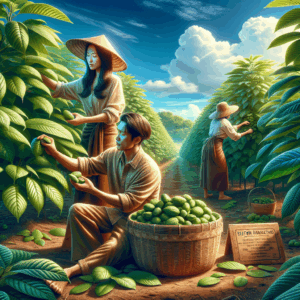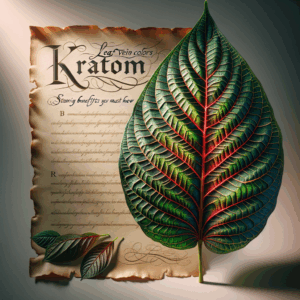
Kratom Drying Methods: Essential Tips for Optimal Quality
- Understanding Kratom: An Overview
- Why Drying Kratom Matters
- Common Drying Methods for Kratom
- Air Drying
- Oven Drying
- Dehydrator Drying
- Sun Drying
- Choosing the Right Method
- Tips for Optimal Drying Conditions
- Temperature Control
- Humidity Levels
- Ventilation
- Storing Dried Kratom
- Use Airtight Containers
- Store in a Cool, Dark Place
- Label Your Containers
- Common Mistakes to Avoid
- Rushing the Process
- Ignoring Environmental Factors
- Not Testing for Dryness
- Conclusion
- Frequently Asked Questions (FAQs)
- References
Understanding Kratom: An Overview

Kratom, scientifically known as Mitragyna speciosa, is a tropical tree native to Southeast Asia. Its leaves contain compounds that can have psychoactive effects. People often use kratom for various purposes, from managing pain to boosting energy levels. Over the years, its popularity has grown, leading to a spike in consumption and cultivation, especially in countries like Thailand, Indonesia, and Malaysia.
When you harvest kratom, how you dry the leaves is critical to maintaining quality. Different methods yield different results, affecting the strain’s potency, aroma, and even color. To maximize your kratom experience, it’s essential to understand these drying methods and their implications.
Why Drying Kratom Matters
Drying kratom leaves properly impacts their quality, aroma, and effectiveness. If you dry the leaves too fast or too slowly, you risk losing alkaloids. Alkaloids are the active compounds in kratom that contribute to its effects. Quality drying ensures a high potency, rich aroma, and a satisfying experience.
Moreover, drying allows for better storage. Properly dried leaves can withstand time without degrading. When moisture lingers, leaves can mold or lose their potency. Therefore, mastering the drying process becomes vital for both consumers and producers.
Common Drying Methods for Kratom
Several methods exist for drying kratom, each with its unique pros and cons. Below is a detailed exploration of the most common drying techniques.
Air Drying
How It Works: Air drying is the most natural and widely used method. You simply lay fresh kratom leaves flat in a well-ventilated area.
Pros:
1. Cost-effective: It requires no special equipment.
2. Natural process: Preserves the leaves’ aroma and flavor.
Cons:
1. Time-consuming: It may take several days to completely dry.
2. Environmental conditions: Humidity and temperature can affect the process.
Air drying is a favorite among those who prefer an organic approach. However, you must keep an eye on weather conditions. High humidity can cause mold growth, negating the benefits of this method.
Oven Drying
How It Works: Oven drying involves placing kratom leaves on a baking sheet and using low heat to hasten the drying process.
Pros:
1. Speed: You can dry leaves in under an hour.
2. Controlled environment: Reduces risks associated with humidity.
Cons:
1. Heating risks: High temperatures can destroy alkaloids.
2. Energy consumption: It uses electricity, which can increase costs.
Oven drying provides a quick solution but requires caution. Always use the lowest temperature setting to avoid degrading the quality of the leaves.
Dehydrator Drying
How It Works: A food dehydrator uses warm air circulation to dry kratom leaves evenly.
Pros:
1. Even drying: Reduces the risk of mold and helps maintain potency.
2. Consistent results: You can set specific temperatures for optimal drying.
Cons:
1. Upfront costs: Food dehydrators can be expensive.
2. Learning curve: It may take time to master the right settings.
Using a dehydrator yields some of the best results. It may require an initial investment, but it pays off in quality.
Sun Drying
How It Works: Sun drying is straightforward: spread fresh leaves in direct sunlight.
Pros:
1. Cost-effective: It doesn’t require electricity or additional resources.
2. Natural flavors: It enhances the leaf’s aroma.
Cons:
1. Environmental risks: Direct sunlight can cause the leaves to lose some potency.
2. Inconsistent quality: Weather dependency can lead to uneven drying.
Sun drying is an age-old method but comes with its challenges. Be wary of leaving leaves out too long, as intense sunlight can degrade them.
Choosing the Right Method
Selecting the proper drying method depends on your priorities. If you aim for a natural approach and have time, air drying or sun drying might be best. However, if speed and consistency are your main concerns, using a dehydrator or oven may suit your needs better.
To help you choose, here’s a quick comparison table:
| Method | Time | Cost | Potency Preservation | Ease of Use |
|——————-|———–|———–|———————-|——————|
| Air Drying | 3-7 days | Low | Moderate | Easy |
| Oven Drying | 1 hour | Moderate | Low | Moderate |
| Dehydrator Drying | 3-8 hours| High | High | Easy to Moderate |
| Sun Drying | 1-3 days | Low | Moderate | Very Easy |
Each method has its strengths and weaknesses. It’s essential to consider what’s most important to you in the drying process.
Tips for Optimal Drying Conditions
To preserve kratom quality, several factors play a role in the drying environment.
Temperature Control
Maintain a consistent temperature between 70°F to 85°F. High temperatures can destroy alkaloids. If you opt for oven drying, never exceed 140°F. Consistency is key to avoiding degradation.
Humidity Levels
Low humidity is crucial to prevent mold. Aim for a relative humidity level below 60%. Using a dehumidifier can help if you live in a humid area. Always monitor the weather if air or sun drying.
Ventilation
Ensure good airflow in the drying area. This helps prevent moisture buildup, which can lead to mold. Proper circulation will keep the environment dry and promote an even drying process.
Storing Dried Kratom
After drying, you want to store kratom correctly to maintain its quality.
Use Airtight Containers
Use opaque, airtight containers to minimize light and air exposure. Glass jars work well but consider vacuum-sealed bags for longer storage.
Store in a Cool, Dark Place
Place your containers in a cool, dark area to deter heat and light exposure. Heat can degrade potency over time, making a cool, dry place ideal.
Label Your Containers
Label each container with the strain type and drying date. Keeping track helps manage inventory and freshness, ensuring the best experience.
Common Mistakes to Avoid
Avoiding common pitfalls can enhance your kratom drying experience.
Rushing the Process
Drying too quickly can compromise alkaloid levels. Patience is essential for optimal quality. Always allow sufficient time for effective drying.
Ignoring Environmental Factors
Ignoring humidity and temperature can ruin your kratom. Always remember that natural drying requires constant monitoring. Pay attention to your surroundings.
Not Testing for Dryness
Before storage, check the leaves for dryness. They should crumble easily between your fingers. If they feel moist, let them dry longer, even if you think they are ready.
Conclusion
Understanding drying methods for kratom ensures you get the best out of this remarkable plant. Each method has its merits and drawbacks. By selecting the right approach and paying attention to the drying conditions, you will enhance your kratom experience. Whether for personal use or as a product supplier, mastering the drying process is crucial for preserving quality.
As you venture into the world of kratom, remember to always educate yourself about the plant and its uses. This knowledge will not only improve your experience but also help you share valuable insights with others.
Frequently Asked Questions (FAQs)
1. What are the benefits of using kratom?
Kratom offers various benefits, such as pain relief, increased energy, and improved mood. Always consult a healthcare professional before use.
2. How long can you store dried kratom?
Properly stored kratom can last up to a year without significant potency loss. However, for the best experience, use it within six months.
3. Can I mix different drying methods?
Yes, you can. Many people start with air drying and finish with a dehydrator for best results.
4. Is sunlight exposure harmful to kratom?
Prolonged sunlight exposure can degrade alkaloids. Use indirect sunlight or limit direct exposure for optimal quality.
5. What’s the best temperature for drying kratom in a dehydrator?
A setting between 130°F and 140°F usually works best for drying kratom.
6. How do I know if kratom is completely dry?
Dried leaves should be brittle and crumble easily. If they feel leathery or pliable, they need more time.
7. Is it okay to eat kratom fresh?
While some people consume fresh kratom, it’s generally better to dry it to maximize alkaloid availability.
8. Can I dry kratom in a microwave?
Microwaving is not recommended, as it can cause uneven drying and destroy alkaloids. Stick to safer methods.
9. How does drying affect kratom strain potency?
Proper drying preserves the delicate alkaloids responsible for potency. Incorrect drying can lead to significant loss.
10. Should I discard kratom if I see mold?
Yes, if you see mold, discard the affected leaves. Mold can be harmful to health.
References
– American Kratom Association
– National Institute of Health
– Mitragyna Speciosa Information
Educating yourself is the first step toward a rewarding kratom experience. Happy drying!


